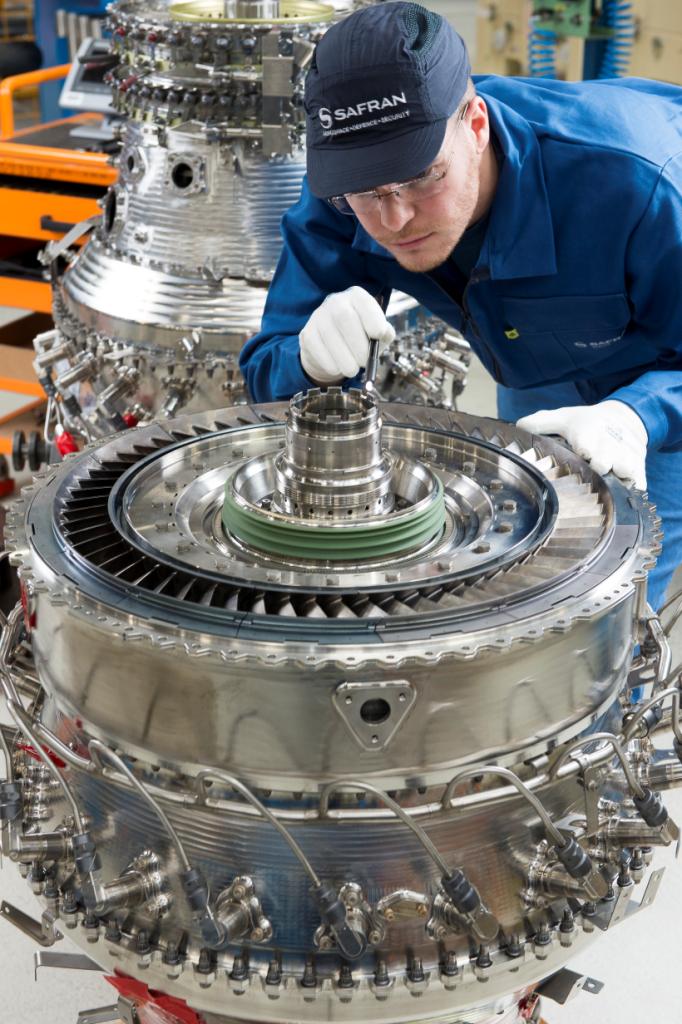http://www.ainonline.com/aviation-news/nbaa-convention-news/2012-10-30/snecma-puts-silvercrest-engine-test
“Silvercrest testing began in the last week of September,” program director Laurence Finet told AIN.
The engine had left the assembly hall in the middle of the month, and
it then had to undergo the installation and instrumentation process.
Some 1,000 measurements are performed during a test. Reaching takeoff
power was a target for mid-October. Asked about a planned number of
hours or cycles, business aviation marketing manager Loïc Nicolas
answered, “Checking the engine’s behavior is more important than a
number of hours.” Eventually, eight engines will be involved in the
development program.
One of the Silvercrests will fly on a Gulfstream GII,
modified as a flying testbed. The first flight is pegged for mid-2013.
This is “a project in the project,” as Finet put it. Modification work
will take a total of one and a half years. Pylon changes and the
addition of telemetry equipment are the bulk of the job. The GII will keep one of its original Rolls-Royce Speys.
What about studying a re-engining of the GII and even the GIII,
as they share the same engines? “The Spey is rated at 12,400 pounds at
takeoff; the Silvercrest could provide as much thrust at takeoff and
even more than the Spey in cruise,” Finet answered. Although some
contacts with GII and GIII
owners have been encouraging, the idea is not deemed mature yet. Snecma
wants to see a solid business case before moving forward.
For the Silvercrest program, full-scale engine development began in
the third quarter of 2010. The core had undergone 80 hours of ground
tests in 2008, after which Snecma toiled to find an application. The
contract with Cessna for the Longitude was signed in May. The
Silvercrest has long been rumored to be the choice for the
still-under-wraps Dassault Falcon SMS, but as of early October, Snecma would not confirm this rumor.
The Silvercrest’s cold section consists of a 42.5-inch fan, a
four-stage booster and a five-stage compressor (including four axial
blisks and one centrifugal stage). The 20 fan blades are metallic. The
low-emission combustor is said to have a high-altitude relight
capability, and it is followed by a single-stage high-pressure (HP) turbine featuring single-crystal blades and a four-stage low-pressure (LP) turbine. The HP and LP spools are contra-rotating for better fuel efficiency. The bypass ratio is close to 6:1.
Snecma is claiming that the Silvercrest will burn 15 percent less fuel, emit 50 percent less NOx than the CAEP/6
standard and halve the noise footprint, “compared to existing engines
in the 10,000- to 12,000-[pound thrust] class.” Finet named the two
reference engines (actually a bit below the aforementioned class), the
9,200-pound GE CF34-3 and the 9,440-pound Rolls-Royce AE3007C2.
In terms of maintenance, Snecma said the Silvercrest is a “true
on-condition engine,” with no fixed interval. No hot-section inspection
will be required. Another feature will be in-flight engine
monitoring capability.
C'est à suivre parce
1) c'est une première pour Snecma tout seul dans ce segment
2) quelle concurrence ? Le GE passport est plus gros 16500 lbs vs 12000 lbs. Le PW800 ? pas encore lancé et globalement plus gros aussi







